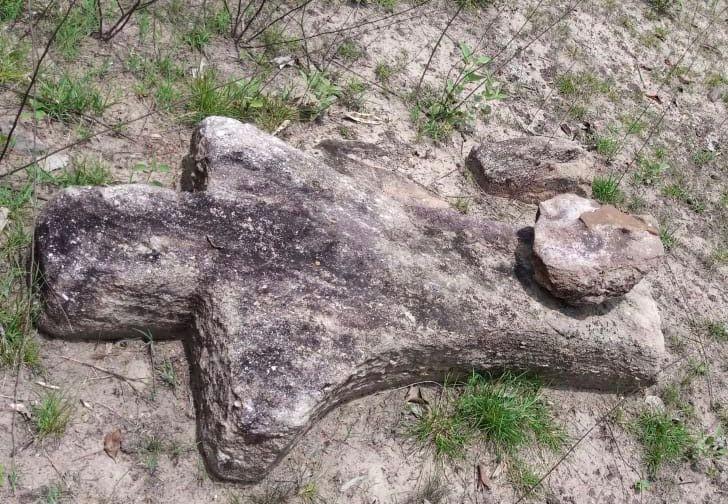The Mulugu district of Telangana has become the stage for an unexpected archaeological revelation following the devastating floods in July 2023. Amidst the aftermath of the natural disaster, a team of amateur historians stumbled upon a collection of paleolithic quartzite tools that have not only captivated the local community but also pushed back the understanding of human habitations in Telangana and central India.
The Unearthed Treasures
Sriramoju Haragopal, the leader of the enthusiastic team, explained that the discovery occurred in the sand bed of a stream that had dried up after the flood. The exposed tools, identified as hand axes, were found between Gurrevula and Bhupatipuram villages in Mulugu district. The significant find was a stone axe measuring 15.5cm in length, 11cm in width, and 5.5cm in thickness. Eleswaram Janardanachari, a dedicated researcher, was the one who made this remarkable discovery.
Time Travel Through Paleolithic Periods
According to paleontologist Ravi Korisettar, the stone axe belongs to the Lower Paleolithic period, dating back approximately 30 lakh (3 million) years ago. The Paleolithic Age, also known as the Old Stone Age or Early Stone Age, spans an extensive period dating back to about 33 lakh (3.3 million) years BC and lasting for 10,000 years. This newfound artifact adds a significant layer to the historical timeline of human existence in the region.
Tool Identification and Purpose
The identification of the tools was based on various factors such as chipping style, material, and size. Haragopal explained that Paleolithic hunter-gatherers commonly used heavy quartzite for crafting large tools like these hand axes. Similar tools have been discovered worldwide and were likely utilized for cutting wood and hunting animals for sustenance.
Comparative Insights
In a historical context, this discovery draws parallels with the findings of the East India Company’s Geological Survey team in 1863. At Attirampakkam near Madras (present-day Chennai), bifacial hand-axes made of stone were uncovered, dating back approximately 15 lakh (1.5 million) years. This earlier discovery marked the establishment of the Paleolithic culture, labeled as the Madras Hand-Axe Industry or Madrasian Culture.
Important Questions Related to Exams
1. What is the approximate age of the discovered stone axe in Mulugu district?
a) 1.5 million years
b) 3 million years
c) 10,000 years
2. What is the Paleolithic Age also known as?
a) Old Stone Age
b) Middle Stone Age
c) New Stone Age
3. What were the paleolithic quartzite tools likely used for?
a) Writing
b) Farming
c) Cutting wood and hunting
Kindly share your responses in the comment section.



 Ajay Jadeja Crowned Heir to Jamnagar Roy...
Ajay Jadeja Crowned Heir to Jamnagar Roy...
 Arjun Vajpai Becomes First Indian to Con...
Arjun Vajpai Becomes First Indian to Con...
 Assam's Cultural Heritage: Eight Traditi...
Assam's Cultural Heritage: Eight Traditi...

